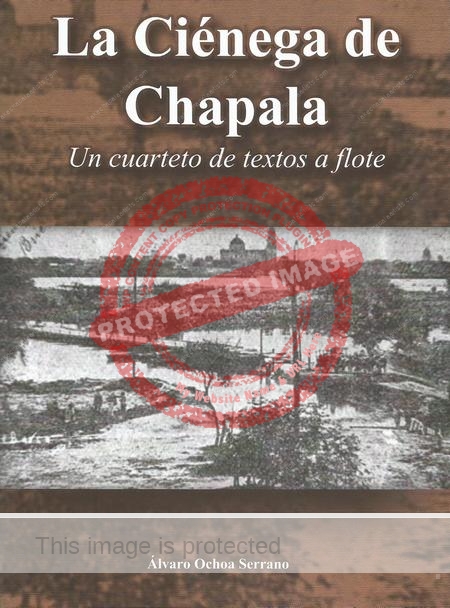When not writing about mariachi, historian Dr Álvaro Ochoa Serrano has dedicated much of his life to writing about Lake Chapala. His latest book, titled La Ciénega de Chapala, published in 2023, is an extraordinarily well-researched account of the history of the eastern end of Lake Chapala, told through four detailed and elegantly written case studies.

The first, centered on the settlement near Jiquilpan named Tototlán (Totolán), walks readers through its development from early colonial times, with an accessible account of how the population, land tenure and economy were influenced by demographic factors, disease, banditry, land transfers and disputes, against a backdrop including the numerous political upheavals of the nineteenth and twentieth centuries.
The second part, about how the War of Independence played out in the wider region, provides an insightful analysis of the insurgents’ defense of Mezcala Island, and of how the war impacted the existing haciendas and settlements east and south of the lake.
Guaracha, the largest of these haciendas, is the subject of the book’s third part, which looks at the changing and sometimes violent relationships between the hacienda and its neighboring settlements from the mid-nineteenth century to modern times. Guaracha lost its proximity to the lakeshore after the first decade of the twentieth century, when the eastern end of the lake was drained for agricultural use.
The fourth part is a masterful account of the area around Briseñas, Buenavista, Cumuato and Maltaraña, haciendas on a deltaic area formed, over thousands of years, by the Río Lerma where it enters the lake. This section skillfully incorporates details of land transactions, ownership, and reclamation while explaining the significant influence of the Castellanos family in the nineteenth century, and the short-lived meteoric rise to political power of Manuel Cuesta Gallardo at the end of the Porfiriato.
Ochoa is a consummate, award-winning historian. His text includes detailed footnotes, a selection of photographs and maps, an extensive bibliography and a full index for names of people and places. His books are available via Spanish-language bookstores and online via http://www.libreriacolmich.com/ amazon.com.mx and bookstore sites such as https://www.gandhi.com.mx (tip: search using “Alvaro Ochoa Serrano”)
La Ciénega de Chapala: un cuarteto de textos a flote is currently available only in Jiquilpan and in Morelia:
– Jiquilpan: Librería del Portal frente a la Plaza; and from Tere Sánchez, Unidad Académica de Estudios Regionales de la UNAM (9 to 3, and 5 to 7).
– Morelia: Librería “La Galaxia de Gutenberg,” calle Ortega y Montañez, casi esquina con Martínez de Lejarza en el barrio de Capuchinas.
Book: Álvaro Ochoa Serrano. 2023. La Ciénega de Chapala: un cuarteto de textos a flote. Tlalpujahua: Editorial Morevalladolid.
Chapter 6 of Lake Chapala: A Postcard History is an English-language account of some of the major changes that occurred in this general area during the twentieth century.
Comments, corrections or additional material are welcomed. Please use the comments feature at the bottom of individual posts, or email us.
Tony Burton’s books include “Lake Chapala: A Postcard History” (2022), “Foreign Footprints in Ajijic” (2022), “If Walls Could Talk: Chapala’s historic buildings and their former occupants” (2020), (available in translation as “Si Las Paredes Hablaran”), “Mexican Kaleidoscope” (2016), and “Lake Chapala Through the Ages” (2008).
this sounds like a great history or history review for some of us–
Yes, it is a really interesting book; thanks for taking the time to comment. Un abrazo, amigo!